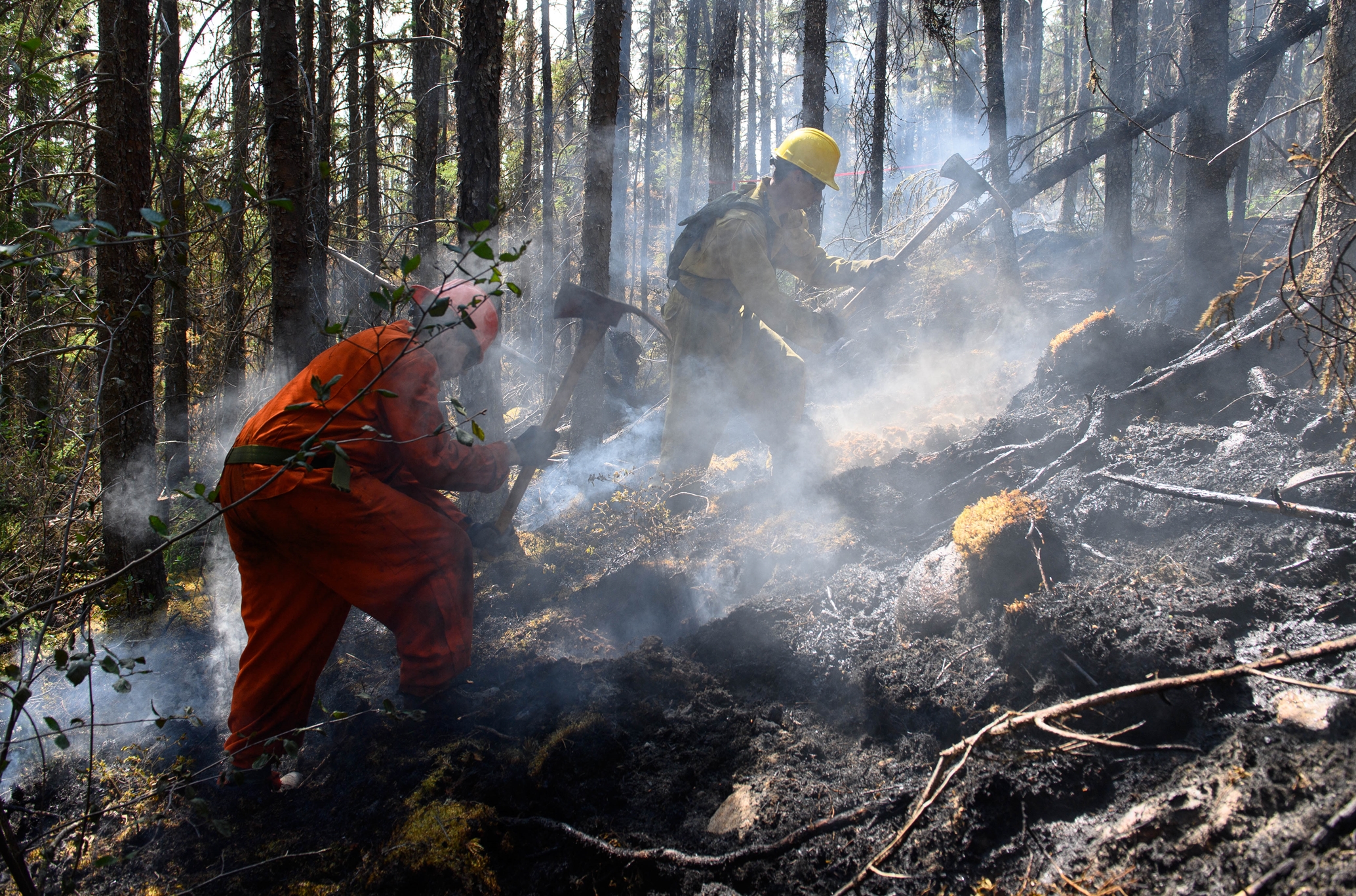20 August 2023
This summer Canada has been utterly pummelled by wildfires. Along with this, Canadians have been inundated with politicians standing in front of disaster relief efforts with sleeves rolled up talking tough and making near identical claims over and over again “We’re calling in the military.” As if this will fix everything. This has become the go-to move for consecutive Canadian governments both provincial and federal since the Chrétien years. It is a disease that afflicts all parties and which betrays both their ignorance of disaster relief as well as the CAF. It further betrays a general disinterest in actually addressing the glaring hole in this discussion, (because it will cost money and require effort) Canada’s lack of a dedicated emergency disaster relief force.
Last spring I was watching a NDDN (Standing Committee on National Defence) committee meeting on the subject of “Rising Domestic Operational Deployments and Challenges for the Canadian Armed Forces.” This was one of a series of meetings but this particular meeting was on 9 May 2022. This it should be mentioned was going on at the same time that Chief of the Defence Staff (CDS) General Wayne Eyre, for whom I have tremendous respect, was beginning to publicly comment on the poor state of the Canadian Armed Forces, an unprecedented occurrence that seemed to have gone almost totally unnoticed in Ottawa. It’s worth noting that a year later he would be telling the Government that the CAF did not have the ability to take part in peacekeeping operations in Haiti, also quickly ignored by this government.
In the meantime, the summer of 2022 was also to be the same summer that the CAF would be deployed to Atlantic Canada in the wake of post-tropical storm Fiona. The prior winter the CAF had been involved with evacuating hundreds of trapped Canadians on Highway 7 in British Columbia. I digress, these are just highlights to provide context of the ongoing trend which has seen the CAF endlessly deployed across the country on disaster relief missions. One example which was raised at the above-mentioned NDDN meeting was OP LENTUS to help prepare for flooding in Yukon, wildfire evacuations in northwestern Ontario, wildfires in Manitoba, and to provide potable water for the people of Iqaluit.

Photo: Corporal Marc-André Leclerc, Valcartier Imaging Section, Canadian Armed Forces
These are missions which are not part of the military’s primary function, that they do not have specialised expertise in, and are poorly equipped to address, not to mention lack of funding. They also have a full-blown recruitment and retention crisis on their hands which everyone is blaming on culture while ignoring the practical issues I just listed. This is a rather spicy and controversial claim in Trudeau’s Canada. The deployment of the Canadian military for domestic disaster relief seems to be the current government’s preferred use of the military and it has become so commonplace that it has motivated a serious pivot in the military towards developing these skills. These are skills, which arguably are better suited to an emergency disaster relief agency akin to the Unites States’ FEMA.
This is where I finally get around to my point and circle back to the NDDN committee meetings. The CAF is currently deployed across Canada from the west coast to the east and most recently the artic to help a hodgepodge of underfunded and short-staffed agencies do everything from fight fires to evacuate Canadians. This is very much a classic case of Canada just getting by while avoiding any move to actually fix the problem. Dr. Wilfrid Greaves (Assistant Professor, Department of Political Science, University of Victoria), was one of two academics who spoke to the committee that day who exemplifies a problematic approach to these issues. After acknowledging our constant stopgapping of disaster relief and the insufficient state of the CAF for these operations, he proceeded to make an argument, which reflects the current attitude towards the CAF and disaster relief. Essentially the argument goes, the CAF have indispensable and vital capabilities that are an essential element moving forward. This argument is rooted in an ignorance of military matters and failure to appreciate how else it might be accomplished outside the military simply because we don’t have those options, yet other countries do, we Canadians just seem rather unwilling to consider foreign models.
How did this view come to be? The second academic to speak that day was Dr. Peter Kikkert (Assistant Professor, Public Policy and Governance, Brian Mulroney Institute of Government, St. Francis Xavier University). As he put it, “Climate change, the natural hazards it amplifies, limited provincial and territorial investment in disaster management resources, and the Canadian Armed Forces’ unique capabilities have led to the CAF’s transformation from a force of last resort in disaster response to a force of first—or only—resort.” I could not have put it any better.
There are two key problems with this. The first problem is that this comes at a cost to the CAF’s primary duties. If the CAF spends all its time doing disaster relief it is not a military anymore because it has little time and given current budget trends neither money nor equipment to train for its primary roles. This is a particularly concerning idea given events in Ukraine and the general geopolitical tone in and around the South China Sea, to name only two of the many concerning global issues at present that urge for greater military investment. As Dr. Kikkert put it “This tempo of domestic operations will negatively affect the CAF’s operational readiness and training for its primary combat role.”
The second issue is a question of fit for purpose, to again quote Dr. Kikkert “The CAF provides only response and relief. It does not do mitigation, preparation and recovery work. In short, the military is not a cure-all to the current disaster management gaps in this country, particularly its lack of a disaster workforce.” Indeed the problem with relying on the CAF is that is does not have many of the requisite skills needed to address these issues holistically, for example, expertise in forest management and fire prevention, or hydrologists and sedimentologists and geologists who spend their entire career studying soil subsidence. Developing this knowledge base in the CAF would cost billions, take years, and ultimately lead to the creation of a jack of all trades and a master of none.
The reality is that civilian groups and agencies can and should be assuming the vast bulk of disaster response roles currently performed by the CAF, and can do so far more cheaply and effectively to boot. Models exist that Canada can duplicate. The US’s FEMA has already been mentioned, however, Germany’s Federal Agency for Technical Relief and Australia’s state emergency service both serve as other good examples. Both of these latter organizations however focus on maintaining small cadres of full-time experts and professionals who support administering and training volunteers at the local level. This leads to call-up issues in times of urgent need. The result is that Canada should look to the FEMA’s tiered system model of full-time professionals backed up by part-time on-call reserve cadres.
A permanent agency such as this is easy to justify given the rate of deployment we currently see, with countless disasters on a regular basis, now the new norm. Only a permanent agency such as this can engage in all phases of disaster management such as prevention and management not only response and recovery. As Dr. Kikkert put it, “These efforts would pay for themselves. Every dollar spent on mitigation and prevention saves between $6 and $13 in response and recovery.” An organisation such as this can and should be providing the sort of disaster relief agency that Canada is lacking and desperately needs which would relieve the pressures being placed on the CAF. In short, Canada needs a permanent emergency disaster relief agency and the CAF isn’t it, no matter how much the Government wishes it were so.
Feature Photo: Members of X Battery, 5e Régiment d’artillerie légère du Canada (5 RALC) forming part of the Saguenay Operational Force put out hot spots in a forest fire zone during Operation LENTUS 23-03 near Chapais, Quebec, on 19 June 2023. Photo: Corporal Marc-André Leclerc, Valcartier Imaging Section, CAF Combat Camera, 2023
Inset Photo: Warrant Officer Sasha Diaz of X Battery, 5e Régiment d’artillerie légère du Canada (5 RALC) directs a Société de protection des forêts contre le feu (SOPFEU) helicopter to dump water on a hot spot in a forest fire area during Operation LENTUS 23-03 near Chapais, Quebec, on 19 June 2023. Canadian Forces Imagery Gallery, 2023.
DefenceReport’s Recap is a multi-format blog that is based on opinions, insights and dedicated research from DefRep editorial staff and writers. The analysis expressed here is the author’s own and is not necessarily reflective of any institutions or organisations which the author may be associated with. In addition, they are separate from DefRep reports, which are based on independent and objective reporting.


